SOURCE: AFI


A recently surfaced CCTV footage from a different angle has shed new light on the tragic crash of an Indian Air Force (IAF) Jaguar fighter jet near Jamnagar, Gujarat, which occurred on the night of April 2, 2025. The video provides a clearer timeline of the incident, revealing that the rear pilot ejected just two seconds before the aircraft slammed into the ground, potentially at an altitude insufficient for a safe ejection. This critical detail may explain why one pilot, Flight Lieutenant Siddharth Yadav, lost his life, while the second pilot survived with injuries.
The footage captures the harrowing final moments of the two-seater Jaguar, which was on a routine night training mission when it encountered a catastrophic failure. According to analysis of the video, the aircraft experienced an initial fire—believed to be triggered by a bird hit—17 seconds before it crashed into an open field in Suvarda village, approximately 12 kilometers from Jamnagar city. The jet, which took off from Jamnagar Airfield, plummeted to the ground and erupted into a massive fireball upon impact, as emergency services rushed to the scene.
Continue readingSOURCE: AFI


BrahMos Aerospace, a pioneering joint venture between India and Russia, has taken center stage at the Latin America Aerospace and Defence (LAAD) exhibition in Rio de Janeiro, unveiling what it proudly touts as the “fastest cruise missile system in the world.” The company’s showcase underscores its ambition to deepen ties with South American nations, particularly Brazil, as it highlights the missile’s cutting-edge technology and potential to enhance defense capabilities.
The event marks a significant moment in the long-standing history of friendship and cooperation between Brazil and India, two nations with a shared legacy of collaboration across various sectors. BrahMos Aerospace is capitalizing on this relationship, expressing confidence that Brazil’s armed forces will recognize the strategic value of the missile system. “We are optimistic,” a company representative stated, emphasizing the potential for the missile to meet the defense needs of the South American country.
Continue readingSOURCE: RAUNAK KUNDE / NEWS BEAT / IDRW.ORG


India is poised to strengthen its air defense capabilities with a potential government-to-government (G2G) deal to acquire 110 Rafale fighter jets from France, as reported by The Print. Negotiations for this multi-billion-dollar contract are expected to commence later this year, marking a significant step in addressing the Indian Air Force’s (IAF) critical shortfall in fighter squadrons.
The deal will also see French aerospace giant Dassault Aviation taking full ownership of Dassault Reliance Aerospace Limited (DRAL), a joint venture with Reliance Aerostructure Limited based in Nagpur, signaling a shift toward greater foreign control over Rafale production in India while committing to sourcing the majority of components from Indian companies.
Continue readingSOURCE: RAUNAK KUNDE / NEWS BEAT / IDRW.ORG


In a significant push to bolster bilateral defence ties, India has extended an offer to the United Arab Emirates (UAE) for its indigenously developed Akash air defence missile system. The proposal, announced during a high-level meeting in New Delhi on April 8, 2025, between Defence Minister Rajnath Singh and Dubai Crown Prince Sheikh Hamdan bin Mohammed bin Rashid Al Maktoum, who also serves as the UAE’s Deputy Prime Minister, marks a new chapter in Indo-UAE cooperation.
This move aligns with India’s broader strategy to export home-grown defence technologies like the Akash system, Pinaka multi-launch rocket systems, and BrahMos supersonic cruise missiles to friendly nations, particularly in the Gulf and ASEAN regions.
Continue readingSOURCE: RAUNAK KUNDE / NEWS BEAT / IDRW.ORG


The Indian Air Force (IAF) is set to bolster its airborne surveillance capabilities with the conversion of ex-Air India Airbus A321 aircraft into the advanced Netra MkII Airborne Early Warning and Control System (AWACS). This ambitious project, undertaken in collaboration with the Defence Research and Development Organisation (DRDO) and Airbus, marks a significant step toward enhancing India’s Indigenous defence capabilities while addressing critical gaps in its aerial early warning infrastructure.
The IAF has acquired six ex-Air India Airbus A321 aircraft, previously used for commercial passenger services, for conversion into Netra MkII AWACS platforms. These aircraft, now under the Ministry of Defence’s purview, were selected for their availability, cost-effectiveness, and suitability for the extensive modifications required to transform them into military-grade surveillance platforms. The A321, a narrow-body jet known for its reliability in civilian aviation, will undergo a complete overhaul to accommodate advanced radar systems, mission equipment, and military-grade avionics.
Continue readingSOURCE: AFI


In a candid interaction with Indian media, Tim Davis, a former Royal Air Force (RAF) instructor, offered a detailed assessment of the SEPECAT Jaguar aircraft, a platform still in service with the Indian Air Force (IAF) but long retired by other nations. Davis, who spent decades training pilots, including many from India, underscored both the strengths and limitations of the aircraft, while making a strong case for its retirement.
Reflecting on the Jaguar’s role in the RAF, Davis noted that the UK operated the aircraft for 34 years, primarily as a low-level strike attack platform. “We did a lot with that aircraft,” he said. “It was used in a similar way to how India uses it today.” However, Davis acknowledged that by the late 1990s and early 2000s, the aircraft had begun to show its age. More advanced platforms like the Tornado GR4 and later the Eurofighter Typhoon began to eclipse the Jaguar in terms of performance, range, payload, and avionics.
Continue readingSOURCE: AFI
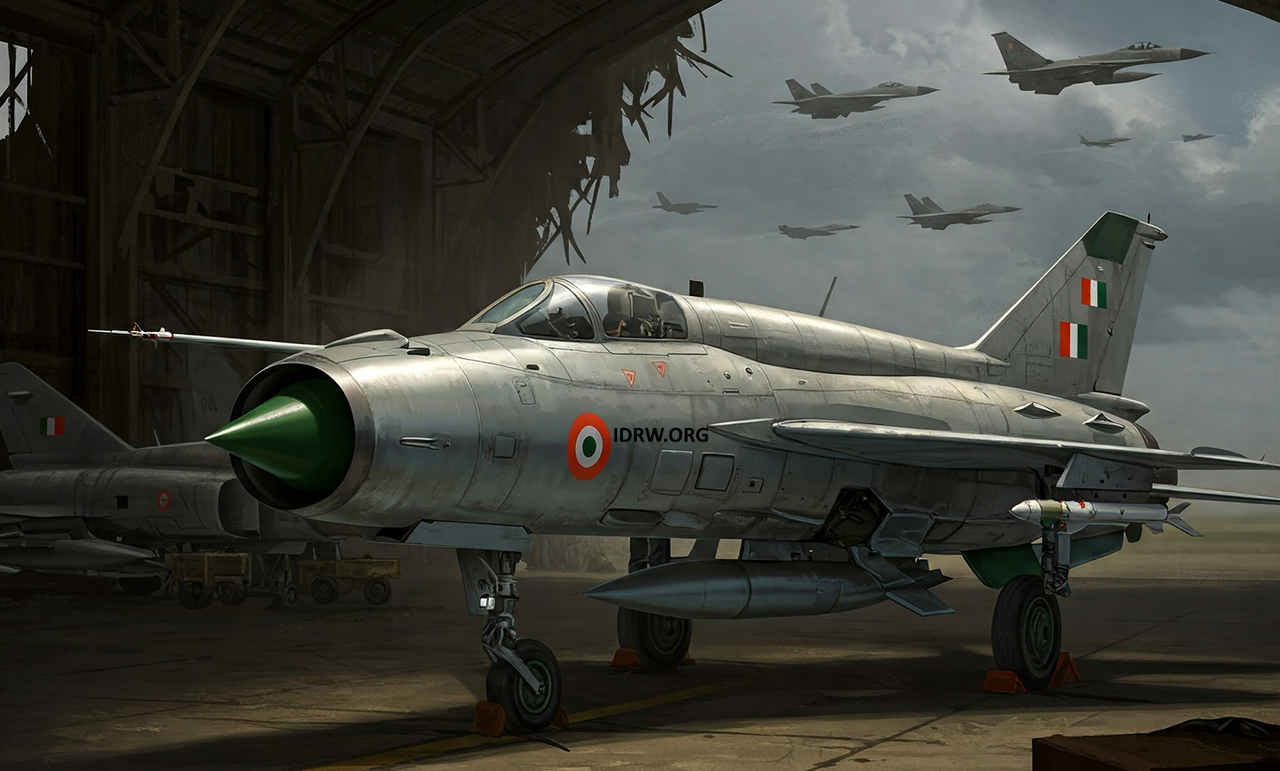

The Indian Air Force (IAF) is grappling with a crisis of unprecedented proportions, one that threatens its ability to safeguard the nation against growing threats from China and Pakistan. In a recent interview on The Wire with host Karan Thapar, Shashank Singh—a leading defense analyst, consultant at Caravan magazine, and lecturer at Yale University—laid bare the gravity of the situation. Drawing from his detailed exposé in Caravan, Singh highlighted a multi-faceted emergency: dwindling squadron strength, outdated aircraft, a lack of critical force multipliers, personnel shortages, and systemic policy failures. His stark warning—“the crisis is very, very serious”—underscores a national security challenge that demands urgent action.
At the heart of the crisis is the IAF’s depleted squadron strength. The IAF is sanctioned for 42 squadrons but currently operates only 31—a 26% shortfall. Singh pointed out that as far back as 2016, defense expert Ashley Tellis assessed that the IAF needs 60 squadrons to effectively counter a two-front threat from China and Pakistan. Yet, the numbers have only dwindled. Two of the 31 squadrons are equipped with MiG-21s, aircraft so outdated that Singh notes they are “just being kept to make up the numbers.” Similarly, the IAF’s Jaguar fleet—long retired by other air forces like the RAF—lacks spare parts, rendering it increasingly obsolete.
Continue readingSOURCE: AFI


Sameer Joshi, CEO of NewSpace Research and Technologies (NRT), took to X this week to spotlight a pressing challenge facing India’s aerospace and defense sector. In a pointed post tagging Union Commerce Minister Piyush Goyal, Joshi celebrated NRT’s strides in delivering deep tech and innovation but lamented the lack of patient capital for companies like his. “VCs love the food delivery guys, yes. GFR and L1 in #DeepTech also hurts…,” he wrote, urging Goyal to take note. As India aims to cement its place in the global aerospace race, Joshi’s words underscore a broader tension: the struggle of deep tech innovators to secure the long-term funding needed to soar.
NewSpace Research and Technologies, a Bengaluru-based firm founded in 2017 by Joshi and Julius Amrit, has been a trailblazer in India’s aerospace and defense landscape. The company focuses on next-generation unmanned systems, developing persistent drones for earth observation and communications that operate at altitudes of 5 to 20 km with endurance ranging from days to months. NRT’s High Altitude Pseudo Satellite (HAPS) UAV, boasting a 3+ month endurance, positions it among a handful of global competitors in cutting-edge aerospace tech. Recent achievements include a solar-powered UAV that flew continuously for 21 hours—a first for India—and setting a global record for the highest altitude flight in a multirotor system.
Continue readingSOURCE: AFI


Since Russia’s invasion of Ukraine in February 2022, the conflict has been as much a war of information as it has been a war of weapons. Ukraine, with the support of Western media, has crafted a narrative of defiance and heroism that often borders on the absurd, blending tales of improbable battlefield feats with exaggerated claims of Russian desperation.
Stories like a Ukrainian pensioner shooting down a £74 million Russian Su-34 jet with a rifle, a woman downing a drone with a jar of tomatoes, Russian reservists fighting with shovels, and Moscow resorting to using dishwasher chips in tanks have captured global attention. While these narratives have bolstered Ukraine’s morale and international support, they also raise questions about the role of Western media in amplifying propaganda that stretches the limits of credibility.
Continue readingSOURCE: IDRW.ORG


The Indian Air Force (IAF) is forging ahead with an ambitious and innovative operational strategy known as the “Wolf Pack” concept, a transformative approach to air combat that integrates cutting-edge technology with tactical ingenuity. At its core, the “Wolf Pack” envisions a dynamic battlefield ecosystem where manned 4.5th- and 5th-generation fighter aircraft serve as the “Wolf”—commanding mother ships—while a diverse “Pack” of manned and unmanned aircraft, helicopters, munitions, and loitering assets operates in unison to dominate the skies. This concept, still in development as of April 2025, reflects the IAF’s commitment to evolving into a fully network-centric force capable of multi-role operations in an increasingly contested aerospace domain.
In the “Wolf Pack” framework, the “Wolf” refers to advanced manned platforms—specifically 4.5th-generation jets like the Tejas Mk1A and Rafale, and eventually 5th-generation stealth fighters such as the Advanced Medium Combat Aircraft (AMCA), slated for induction by the mid-2030s. These aircraft act as the nerve center of the operation, equipped with sophisticated avionics, Active Electronically Scanned Array (AESA) radars, and real-time data-link systems. Their role is to orchestrate missions, leveraging superior situational awareness to direct the “Pack” while engaging high-value targets themselves. The manned element ensures human decision-making remains at the helm, a critical factor in complex, high-stakes scenarios where adaptability and intuition are paramount.
Continue readingSOURCE: IDRW.ORG
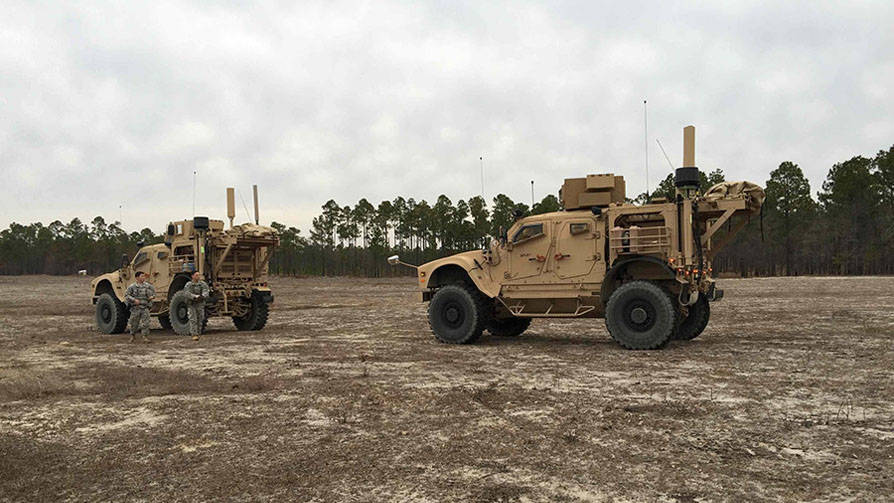

The Indian Air Force (IAF) has issued a call for the development of an advanced ground-based Signal Intelligence (SIGINT) system to address the limitations of current systems in hilly terrain, where inadequate Line of Sight (LOS) hampers the ability to triangulate adversary sensors. Announced on April 3, 2025, the proposed system will be mounted on a compact 4×4 all-terrain vehicle, equipped with a smart sensor for tactical Electronic Intelligence (ELINT) and a micro Electronic Support Measures (ESM) system onboard drones. This innovative solution aims to enhance the IAF’s ability to gather critical intelligence in challenging environments, such as the mountainous regions along India’s northern borders, ensuring real-time situational awareness and improved electronic warfare capabilities.
The IAF highlighted the shortcomings of existing ground-based SIGINT systems, stating, “Presently, ground-based Signal Intelligence (SIGINT) systems have restricted capabilities in hilly terrain and are unable to triangulate the adversary’s sensors due to inadequate Line of Sight.” In regions like the Line of Actual Control (LAC) with China or the Line of Control (LoC) with Pakistan, where rugged terrain and high altitudes dominate, traditional SIGINT systems struggle to detect and locate enemy radar, communication systems, and other electronic emissions. The new system is designed to overcome these challenges by combining a mobile, all-terrain platform with drone-based sensors, providing a flexible and robust solution for intelligence gathering in contested environments.
Continue readingSOURCE: AFI
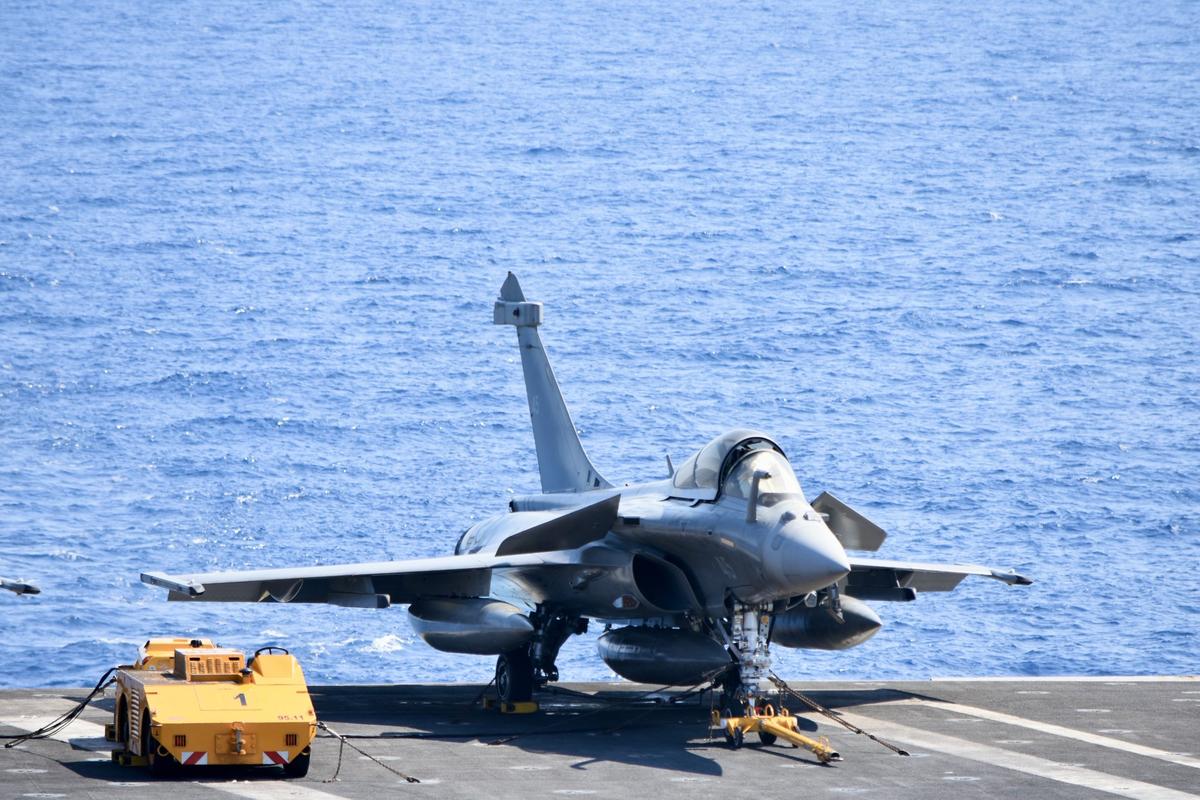

In a landmark decision to strengthen the Indian Navy’s maritime strike capabilities, the Cabinet Committee on Security (CCS), chaired by Prime Minister Narendra Modi, has approved a ?63,000 crore government-to-government deal with France to procure 26 Rafale Marine (Rafale-M) fighter jets from Dassault Aviation. The contract, cleared on April 8, 2025, marks India’s largest-ever fighter jet acquisition and is set to enhance the Navy’s operational prowess in the Indian Ocean Region (IOR), particularly amid growing Chinese naval activity. However, the deal also raises questions about India’s long-term self-reliance goals and the strategic implications of continued reliance on foreign defense imports.
The contract includes 22 single-seater Rafale-M jets and four twin-seater trainer variants, designed specifically for carrier-based operations. These jets will be deployed on India’s indigenous aircraft carrier, INS Vikrant, and will complement the Navy’s existing fleet of Russian-origin MiG-29K jets, which currently operate from INS Vikramaditya. The Rafale-M, a 4.5-generation omnirole fighter, is engineered for Short Take-Off But Arrested Recovery (STOBAR) operations, featuring a reinforced undercarriage, strengthened landing gear, and a corrosion-resistant airframe to withstand the harsh maritime environment. The jets can carry 9.5 tonnes of weapons, including air-to-air, air-to-ground, and anti-ship munitions, making them a formidable asset for both offensive and defensive missions.
Continue readingSOURCE: AFI
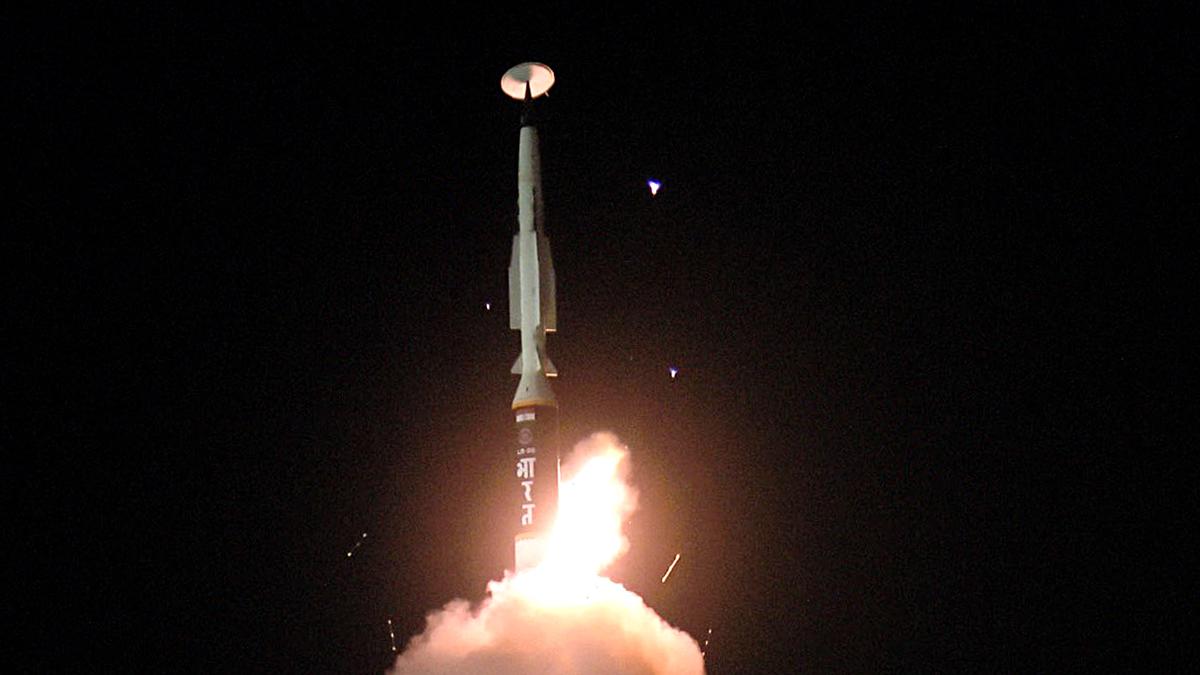

In an era of shifting power dynamics in the Indo-Pacific, a Japanese think tank has put forth a bold proposition: India and Japan should jointly develop a long-range tactical strike capability, with a range of 2,000 to 3,000 kilometers, to establish a “shared deterrence” against China’s growing assertiveness. The report underscores that while the United States already wields Tomahawk cruise missiles and strategic bombers capable of striking Beijing, a collaborative Indo-Japanese effort could reshape the regional security architecture, offering a counterweight to China’s military ambitions.
The idea isn’t just a technical suggestion—it’s a strategic call to action. China’s rapid military modernization, from its hypersonic missiles to its expanding naval presence in the East and South China Seas, has rattled its neighbors. For Japan, the threat looms over its Senkaku Islands, contested by Beijing. For India, it’s the simmering tension along the Line of Actual Control (LAC) in the Himalayas, where the 2020 Galwan clash exposed the fragility of deterrence against a nuclear-armed rival. The think tank’s report argues that a joint long-range strike capability would give both nations the means to hold Chinese military assets at risk, enhancing deterrence without relying solely on the U.S. security umbrella.
Continue readingSOURCE: AFI


The Indo-Pakistani War of 1965 remains one of South Asia’s most debated conflicts, a 17-day clash that left thousands dead, tanks in ruins, and borders redrawn—only to be reset by the Tashkent Declaration. Recently, allegations have surfaced that Pakistani editors have altered the war’s Wikipedia page, introducing “neutral claims” that significantly revise casualty figures, equipment losses, and territorial outcomes.
These edits—purporting to reflect impartial estimates—list Pakistan with lower losses and India with higher ones compared to traditional accounts. But how do these numbers stack up against historical evidence? Let’s dive into the claims and fact-check the narrative.
Continue readingSOURCE: AFI
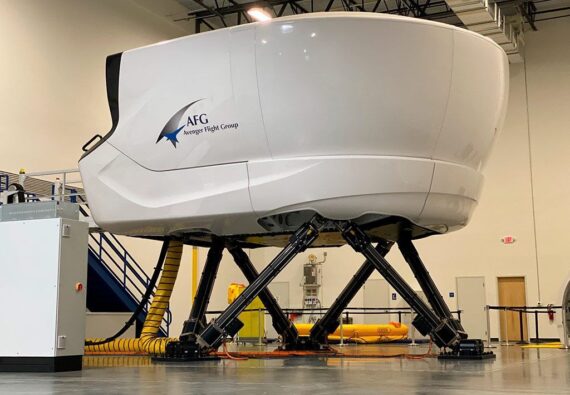

In a significant step towards self-reliance in aviation technology, India unveiled its first domestically developed Airbus A320 flight simulator at an inauguration ceremony in Pune. The event, presided over by the Minister of State (MoS) for Civil Aviation, Murlidhar Mohol, marks a milestone in the country’s efforts to bolster its aerospace capabilities and reduce dependence on imported training systems.
The state-of-the-art simulator, designed and built by Indian engineers, replicates the cockpit and flight dynamics of the Airbus A320, one of the most widely used commercial aircraft globally. This indigenous innovation is expected to enhance pilot training programs across India, offering a cost-effective and locally tailored solution for airlines and aviation academies. The facility, located in Pune—a city increasingly recognized as a hub for technological advancement—demonstrates India’s growing prowess in high-tech manufacturing.
Continue reading